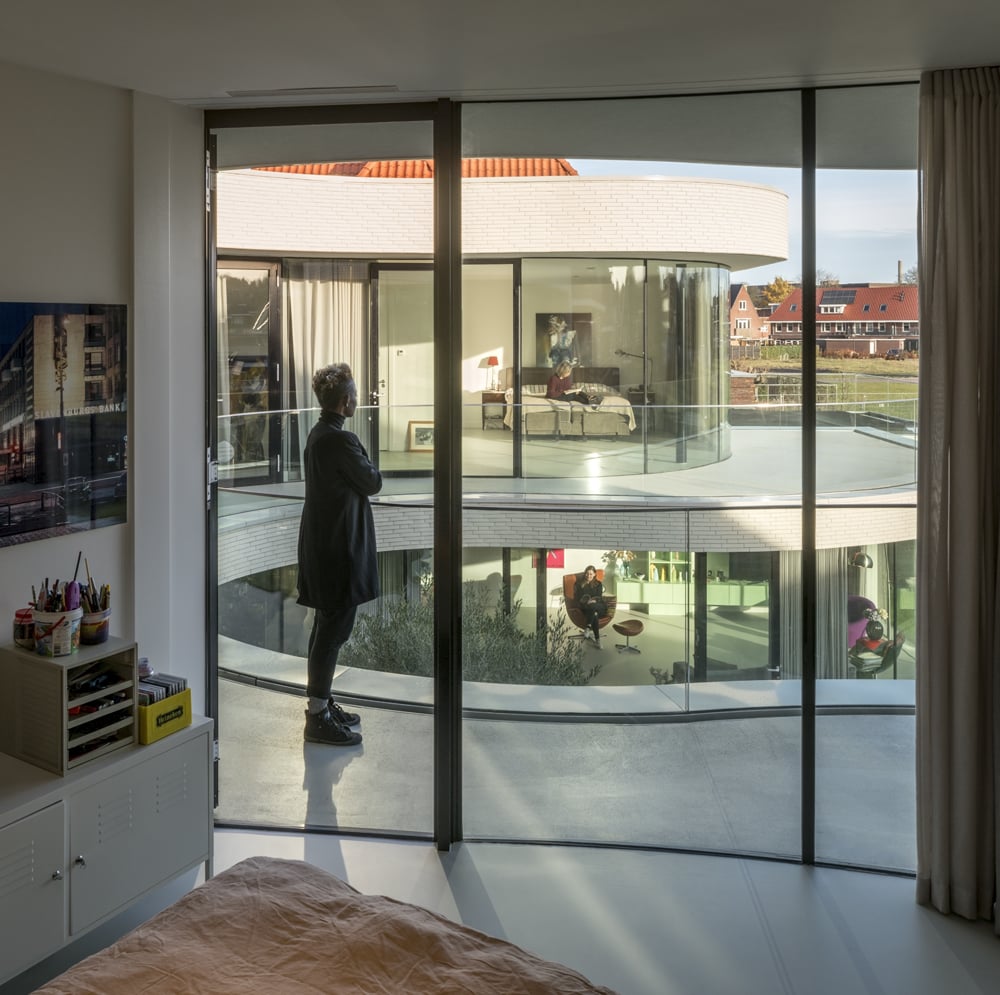
March 17, 2017
MVRDV Applies Its Unconventional Form-Making to the Family Home
MVRDV principal Jacob van Rijs’s latest project upends the typology of a more intimate scale of building: the residence.
It’s not every day that Jacob van Rijs, a principal of the renowned Dutch architecture and urban design firm MVRDV, takes on a commission for a single-family home. For a team as large as his—the firm counts more than 150 employees across its Rotterdam and Shanghai studios—building at a small scale rarely makes financial sense. “Nevertheless,” says van Rijs, “every now and then we want to make a private residence. It can be very rewarding, and quite a personal process.”
When family friends approached van Rijs to create their dream house, he relished the opportunity to work at an intimate scale, especially as the clients, Dirk and Litsa Kwantes, desired a nontraditional home.
This excited van Rijs, given the firm’s rigorous approach to form. But the Kwanteses also specified an optimal amount of sunlight and a strong sense of privacy— a challenge in the fairly compact residential town of Schiedam, where they already lived. Despite its proximity to Rotterdam, the dense suburb is known for its 18th-century windmills and historic homes, and therefore, van Rijs notes, has many contemporary homes built in a nostalgic style to meet community requirements.
“This was one of the last spaces available, because of its slightly irregular shape,” says van Rijs of the obtuse corner plot where Casa Kwantes now stands.


If not for the rather staid gabled-roof homes directly neighboring it, the lay passerby might mistake the home’s light gray brick exterior for the facade of a sleek office or gallery space. A standing perimeter of grid trellises borders the resolutely modern brick exterior featuring two windows—one made from latticed brickwork, the other a simple box frame—that main- tain a private, nearly opaque presence on the street.
Inside, however, the home reveals a study in contrasts, as its hard linearity gives way to a dramatic floor-to-ceiling glass facade that sweeps and curves around a central courtyard garden. At its focal point is a stout and hardy olive tree, heightening a connection to the outdoors. The monochromatic off-white palette and the planting are both nods to Litsa Kwantes’s Greek upbringing—translated in brick, glass, and steel that hold up in the Netherlands’ less forgiving climate.
The structure is not just a showstopper that resists typology but a highly contextual solution to a set of conditions—a combination that has become a signature of MVRDV’s work. The two-story home, van Rijs explains, was organized as a double structure to maximize the plot and address the residents’ desire for optimal light and privacy. In spite of the neighborhood’s tight building lots—van Rijs jokes that in some cases, the lots are so closely hewn that “you can almost shake hands with your neighbor”—this unique concave geometry orients views inward to the courtyard, and across to opposite wings. “At the back, our view is always another angle of our own home,” says Dirk Kwantes. “The view never ceases to amaze me.” Upon completing the structure, van Rijs was also pleasantly surprised to note the unexpected texture of reflections caused by the undulating layers of the glass facade and balustrade. “There are all these visual connections,” says van Rijs. “With the curves, you get some really bizarre reflections. Looking across the courtyard, you might see somebody reflected maybe three times—kind of like an art installation, maybe a Dan Graham.”
The unorthodox form was also somewhat of a coup, considering that van Rijs had to meet what he refers to as the neighborhood’s “nostalgic urban requirement.” Only after the rejection of his initial proposal for a fully curvilinear structure did van Rijs reconfigure the home’s street-facing side as a more rectilinear form, arguing for its historical reference to 1930s Modernism—a specific breed of contemporary.
Partly compensating for Casa Kwantes’s liberal use of glass, an impressive range of renewable energy systems—rooftop solar panels, a ground-source heat pump, and a heat exchange system—achieve net-zero standards, but remain largely out of sight. As van Rijs points out, these are less design features than part of a government mandate for new construction. “The big discussion we have here is that our dependence on natural gas is clearly going to end,” he says, explaining that renewable energy requirements for new buildings become more rigorous each year. It’s a challenge that has become part and parcel of architectural practice in the Netherlands—and one that van Rijs is optimistic about. “You don’t become a fossil fuel–free society overnight,” he says, but as net-zero structures of every shape and sort become the new norm, “there’s a tipping point, and it’s imaginable, within reach.”












